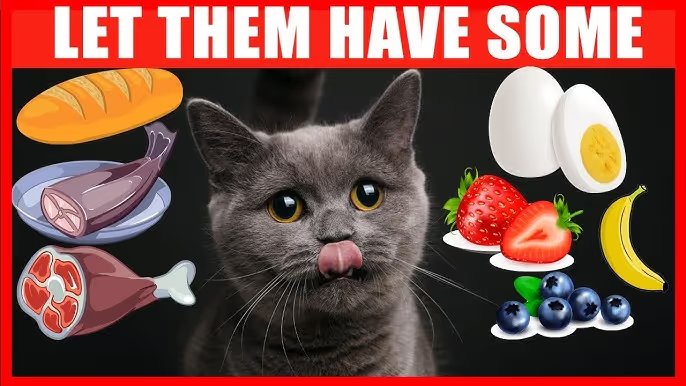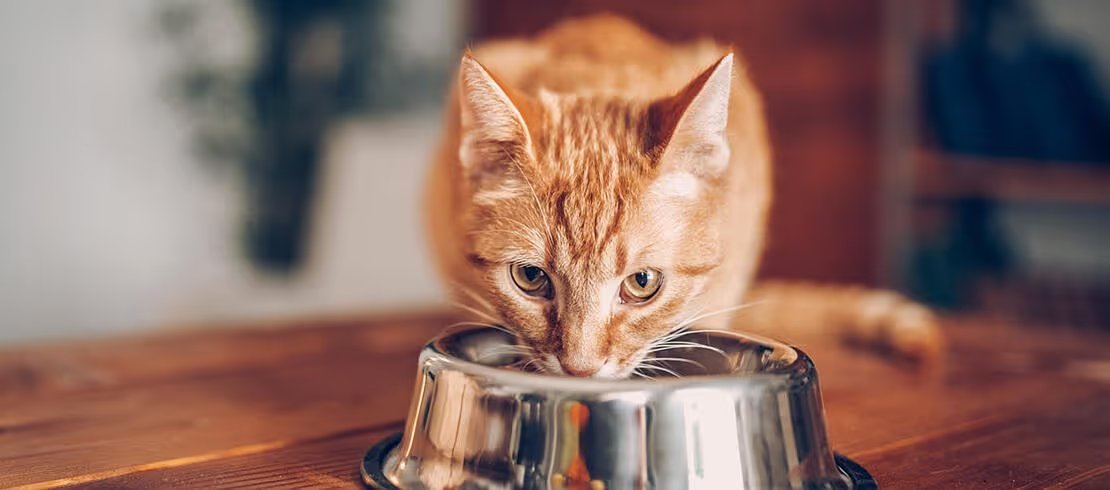- HomePage
- Most Asked
- What Can Cats Not Eat
What Can Cats Not Eat
Understanding what foods are harmful to cats is crucial for their health and safety. This brief guide highlights the key foods that are toxic to cats.Common foods like chocolate, onions, garlic, caffeine, and certain fruits can be dangerous for cats. These items contain substances that cats can't process properly, leading to potential health risks.
Many cat owners are unaware of these dangers. Accidental ingestion of these toxic foods can occur, especially if cats have access to them or are given them as treats. Raising awareness is vital to prevent harm to our feline friends.TAP ON THE IMAGE TO READ THE MORE OF THE ARTICLE.

1. The Hidden Dangers in Your Kitchen: Foods Toxic to Cats
Introduction
Briefly introduce the importance of knowing what foods are toxic to cats.
Mention how common household items can pose a risk.
Main Content
List and explain various toxic foods like onions, garlic, chocolate, caffeine, and others.
Discuss the symptoms of poisoning in cats and what to do if a cat ingests these foods.
Provide preventive measures to keep these foods out of reach.
Conclusion
Recap the importance of being aware of toxic foods.
Encourage readers to share this information with other cat owners.
2. Why Chocolate is a Big No-No for Cats: Understanding the Risks
Introduction
Explain why chocolate is often in homes and the risk it poses to cats.
Main Content
Detail the toxic components of chocolate (theobromine and caffeine).
Discuss the symptoms of chocolate poisoning in cats.
Offer advice on what to do if a cat ingests chocolate.
Conclusion
Stress the importance of keeping chocolate away from cats.
Suggest alternatives for safe cat treats.

3. Onions and Garlic: Common Foods That Can Harm Your Cat
Introduction
Highlight the common use of onions and garlic in cooking.
Main Content
Explain why onions and garlic are toxic to cats (thiosulfate and its effects).
Describe the symptoms of onion and garlic poisoning in cats.
Offer tips on how to prevent accidental ingestion.
Conclusion
Emphasize the importance of vigilance in preventing cat exposure to these foods.
Suggest alternative cat-friendly herbs and spices.
4. Alcohol and Cats: A Dangerous Combination
Introduction
Discuss the commonality of alcohol in homes and its potential risks to pets.
Main Content
Explain the effects of alcohol on cats' health.
Describe symptoms of alcohol poisoning in cats.
Provide steps to take if a cat ingests alcohol.
Conclusion
Emphasize the seriousness of keeping alcohol away from cats.
Encourage responsible pet ownership.
5. The Surprising Risks of Feeding Cats Dairy Products
Introduction
Debunk the myth that cats can safely consume dairy products.
Main Content
Explain lactose intolerance in cats and its effects.
List dairy products that are harmful to cats and describe the symptoms of lactose intolerance.
Offer healthy alternatives to dairy for cats.
Conclusion
Reiterate the importance of understanding cats' dietary needs.
Encourage readers to consult with a vet for proper cat nutrition.

6. Caffeine and Cats: Why Your Morning Coffee is Harmful to Your Feline Friend
Introduction
Begin with the popularity of coffee and its hidden dangers to cats.
Highlight the importance of understanding caffeine's impact on feline health.
Main Content
Detail the toxic effects of caffeine on cats, including symptoms of caffeine poisoning.
Discuss the sources of caffeine in the home beyond just coffee.
Offer advice on how to prevent cats from accessing caffeinated products.
Conclusion
Summarize the importance of keeping caffeine away from cats.
Encourage cat owners to seek veterinarian advice for safe dietary practices.
7. Grapes and Raisins: Small Snacks with Big Risks for Cats
Introduction
Introduce the common misconception of grapes and raisins being harmless snacks for pets.
Main Content
Explain the toxicity of grapes and raisins to cats and potential health complications.
Describe the signs of grape or raisin poisoning in cats.
Provide guidelines on what to do if a cat ingests these foods and prevention tips.
Conclusion
Emphasize the importance of avoiding these foods in a cat's diet.
Suggest safe and healthy alternatives for cat treats.
8. Understanding the Dangers of Xylitol in Cat Diets
Introduction
Start with the growing prevalence of xylitol in various products.
Main Content
Explain what xylitol is and why it is dangerous to cats.
List common household items that may contain xylitol.
Offer advice on preventing accidental ingestion and what to do in case of poisoning.
Conclusion
Highlight the need for careful scrutiny of product ingredients for cat safety.
Encourage consultations with veterinarians for safe dietary choices.
9. Why Raw Meat and Eggs are Bad for Cats: Health Risks Explained
Introduction
Address the trend of feeding raw diets to pets and its potential risks.
Main Content
Discuss the dangers of raw meat and eggs, including bacterial infections and nutritional imbalances.
Explain symptoms of related health issues in cats.
Offer safer alternatives for those considering a raw diet for their cats.
Conclusion
Stress the importance of a balanced diet and proper food handling for cats.
Encourage readers to work with veterinarians to plan a cat's diet.
10. Navigating Cat Nutrition: Foods to Avoid for a Healthy Feline
Introduction
Highlight the complexity of cat nutrition and common misconceptions.
Main Content
Provide a comprehensive list of foods to avoid, including reasons why they are harmful.
Discuss the nutritional needs of cats and how certain foods can disrupt their health.
Offer tips for creating a balanced and safe diet for cats.
Conclusion
Recap the key points on what foods are harmful to cats.
Encourage ongoing education and consultation with veterinarians for optimal cat health.

Flowers That Are Toxic To Cats?
There are several flowers and plants that are toxic to cats. It's important for cat owners to be aware of these to ensure their pets' safety. Some common toxic flowers and plants include:
Lilies: All parts of lilies can be extremely toxic to cats, leading to kidney failure.
Tulips: The bulbs of tulips are particularly harmful if ingested by cats.
Azaleas: Eating even a few leaves can cause oral irritation, vomiting, and diarrhea in cats.
Daffodils: The bulbs are the most toxic part, but the entire plant can be harmful.
Oleander: All parts of the oleander plant are toxic to cats and can cause severe symptoms, including heart problems.
Sago Palm: Especially toxic, even small ingestions can be fatal.
Chrysanthemums: Can cause gastrointestinal upset, drooling, and skin irritation.
Hyacinths: Like tulips, the bulbs are the most dangerous part.
Autumn Crocus: The entire plant is toxic, causing gastrointestinal distress, respiratory problems, and kidney damage.
Cyclamen: The roots contain the most toxins, but all parts of the plant can be harmful.
If you suspect your cat has ingested any part of a toxic plant, it's important to seek veterinary care immediately. Additionally, it's a good practice to keep such plants out of reach of cats, or better yet, opt for cat-safe plants in your home.
Cat Breeds Around the World
In the world, there are over a hundred cat breeds, each known for their unique characteristics. Some popular and lesser-known cat breeds include Abyssinian, American Bobtail, American Curl, American Shorthair, American Wirehair, Balinese, Bengal, Birman, Bombay, British Shorthair, Burmese, Burmilla, Chartreux, Cornish Rex, Devon Rex, Egyptian Mau, European Burmese, Exotic Shorthair, Havana Brown, Himalayan, Japanese Bobtail, Korat, LaPerm, Maine Coon, Manx, Munchkin, Nebelung, Norwegian Forest Cat, Ocicat, Oriental, Persian, Pixie-bob, Ragamuffin, Ragdoll, Russian Blue, Scottish Fold, Selkirk Rex, Siamese, Siberian, Singapura, Snowshoe, Somali, Sphynx, Tonkinese, Toyger, Turkish Angora, and Turkish Van. Each cat breed differs in physical traits and temperament. New breeds can be recognized from time to time, and breed popularity may vary by region.
Frequently Asked Questions
What can cats not eat everyday?
Cats should not eat chocolate, onions, garlic, grapes, raisins, alcohol, caffeine, xylitol (found in sugar-free products), and dairy products.
What can cats eat and not eat?
Cats can eat meat (like chicken and turkey), fish in moderation, cooked eggs, and certain fruits and vegetables. They should not eat chocolate, onions, garlic, grapes, raisins, caffeine, alcohol, or xylitol.
What is harmful to cats?
Harmful substances for cats include chocolate, onions, garlic, caffeine, alcohol, grapes, raisins, xylitol, certain plants (like lilies), and human medications.
What human food can cats eat everyday?
Cats can eat small amounts of cooked lean meats like chicken or turkey, and cooked fish like salmon or tuna. However, a balanced commercial cat food should form the majority of their diet.
Can cats eat fish?
Yes, cats can eat fish, but it should be cooked and given in moderation due to potential heavy metals and the risk of thiamine deficiency.
Can cats eat chicken?
Yes, cats can eat cooked chicken without seasoning. It's a good source of protein for them.
What can kill a cat in 30 minutes?
Certain human medications, like acetaminophen (Tylenol), and highly toxic substances like antifreeze or rat poison, can be lethal to cats very quickly.
Can cats eat grapes?
No, grapes (and raisins) are toxic to cats and can lead to kidney failure. They should be completely avoided.
What human food can I feed my cats?
Cooked lean meats (chicken, turkey), cooked fish (salmon, tuna), and cooked eggs. Always serve these in small amounts and without any seasonings or additives.
What should not be in cat food?
Avoid chocolate, caffeine, alcohol, onions, garlic, grapes, raisins, xylitol, and high levels of carbohydrates or fillers like corn and wheat.
What foods are cats sensitive to?
Cats are often sensitive to dairy (many are lactose intolerant), chocolate, onions, garlic, caffeine, alcohol, grapes, and raisins.
Can cats not eat anything?
Cats have specific dietary restrictions and should not consume certain human foods, as they can be toxic or harmful to their health.
What is cats' favorite food?
Many cats enjoy fish and cooked poultry like chicken or turkey. Preferences can vary between individual cats.
Can cats have cheese?
Some cats can tolerate small amounts of cheese, but many are lactose intolerant. It's safer to avoid giving cheese as a regular part of their diet.
What are 3 toxic foods for cats?
Chocolate, onions, and grapes are highly toxic to cats.
What are the top toxic foods for cats?
Chocolate, caffeine, alcohol, onions, garlic, grapes, raisins, xylitol, and certain plants like lilies are among the most toxic foods for cats.
What food relaxes cats?
There's no specific food known to relax cats. However, a well-balanced diet can contribute to their overall well-being and calmness.
Can cats have peanut butter?
Cats can eat peanut butter in very small amounts, but it's not recommended due to its high fat content and potential for choking. Additionally, make sure it doesn't contain xylitol, which is toxic to cats.
Can cats have bacon?
Cats can eat bacon occasionally in very small amounts, but it's not recommended as a regular part of their diet due to its high fat and sodium content.
Can cats eat banana?
Cats can eat bananas in small amounts, but most cats are not interested in fruits. Bananas are non-toxic but offer little nutritional benefit for cats.
What can cats drink?
The best drink for cats is fresh, clean water. Avoid giving milk as many cats are lactose intolerant.
Can cats eat canned tuna?
Cats can eat canned tuna in water (not in oil) occasionally, but it shouldn't replace a balanced cat food diet. Tuna lacks certain nutrients cats need and can lead to health issues if fed in excess.
What vegetables can cats not eat?
Avoid feeding cats onions, garlic, chives, leeks, and shallots as they are toxic to cats. While other vegetables are not necessarily toxic, many do not provide significant nutritional benefits for cats.
Conclusion
In conclusion, ensuring the safety of our feline friends involves being vigilant about their diet. Avoiding toxic foods like chocolate, onions, garlic, caffeine, and certain fruits is essential. By educating ourselves and spreading awareness, we can prevent health risks and keep our cats healthy and happy.
Read More